From October 25 to 26, JKA NorCal held its first-ever training camp in San Francisco, California. It was our great honor and privilege to welcome Hirayama Sensei, 7th Dan from the Japan Karate Association Headquarters, as our special guest instructor.

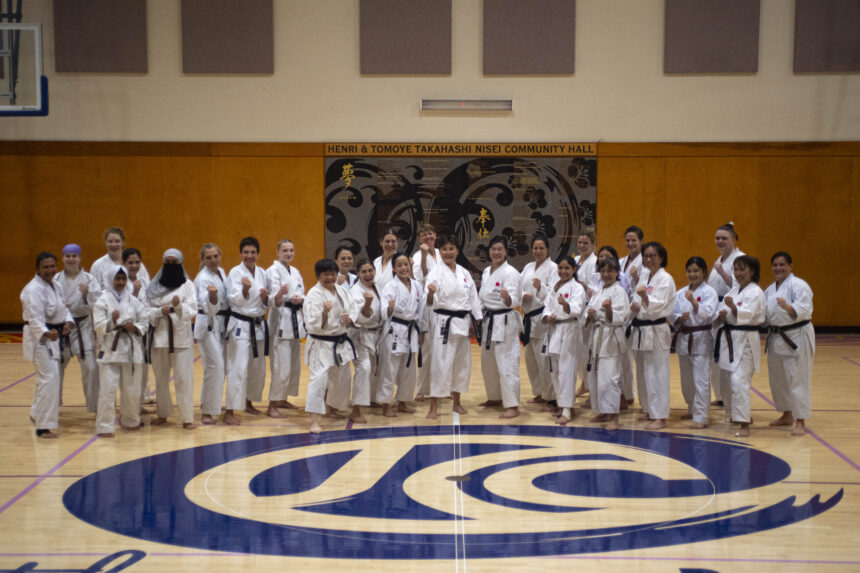
The camp brought together more than 80 karate-ka from across the United States. With attendees coming from as far as Miami, Vancouver, and Tokyo, we’re touched to have received such overwhelming support from the local, national, and international karate community. Additionally, out of all participants, over half were women. The highest-ranked female in the JKA instructor program, Hirayama Sensei is an inspiration for many karateka for her extensive competitive career, excellent instruction, and remarkable good-nature. With these being her first official classes in the States, it’s no surprise that so many travelled to learn from her! We’re pleased that dojos from so many organizations and affiliations came together, eager to learn. We hope this opens the door for more collaborations in the future with other Bay Area clubs!
Friday
The camp began unofficially with a general class closed to only NorCal students and visiting U.S. National Team members. Here, Hirayama Sensei introduced us to the concept of “0-10-0,” a rapid cycling between relaxation and contraction. This principle encourages practitioners to perform individual techniques at full power, followed by releasing all tension before moving on. She also gave insight into different levels of training by explaining progressions for gohon kumite between the color belt, brown belt, and black belt levels. By framing the drills in such an accessible way, Sensei provided participants of all skill levels a way to apply her lessons in their daily practice.
Hirayama Sensei also led a second, advanced session that continued on the “0-10-0” theme with applications in kihon and kata. Sensei then provided detailed feedback for Bassai Dai, Kanku Dai, and Jion with emphasis on technical precision.
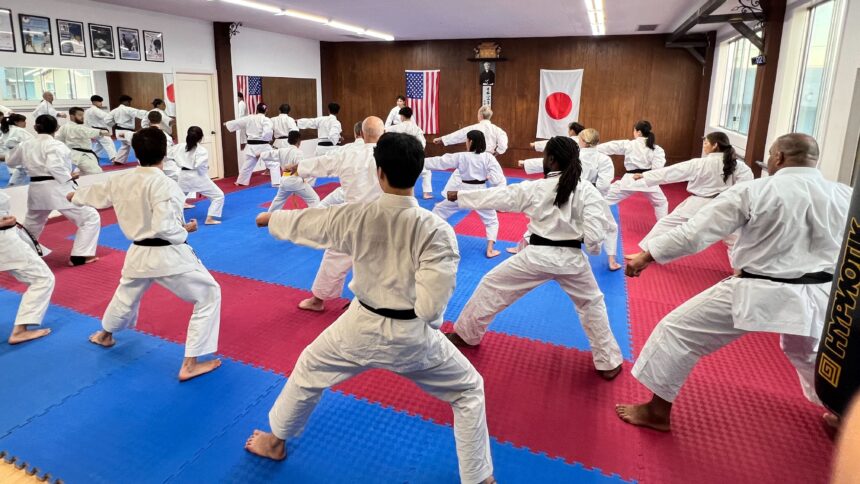

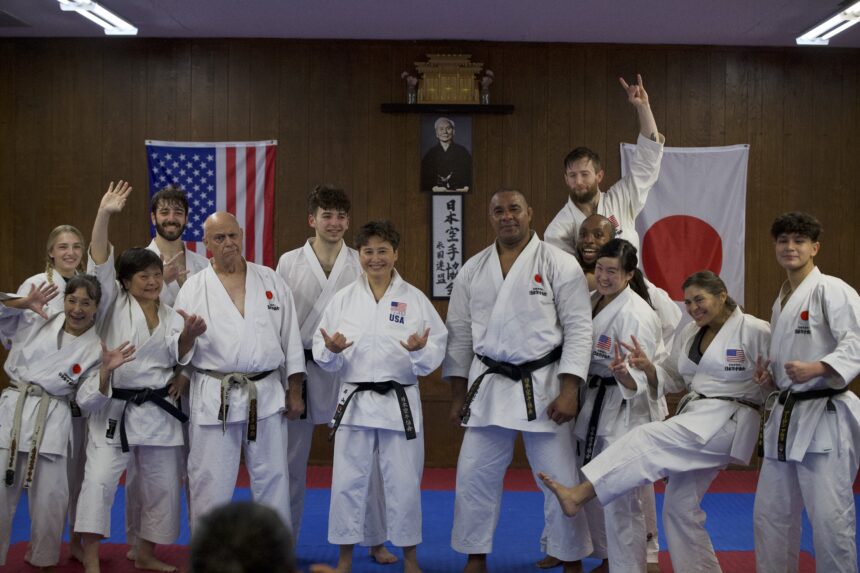
Saturday
Open Mat
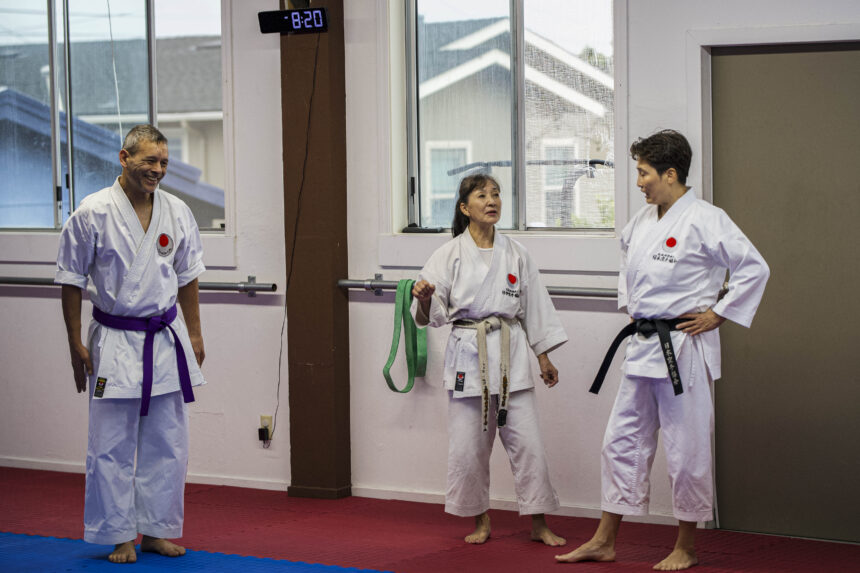
On the official opening day, we kicked off the morning with an open mat. Here, all participants had the opportunity to train with current and former members of the JKA-USA National Team.
This provided a rare opportunity where competitors had open options to work at their own pace in collaboration with other high-level karateka. While some team members ran a short competition-focused kumite class, others reviewed advanced katas with rising competitors or shared personal favorite kihon sequences for improving their mind-body connection. This casual, workshop-esque atmosphere boosted morale, starting everyone’s weekend off with an air of enthusiasm and excitement.
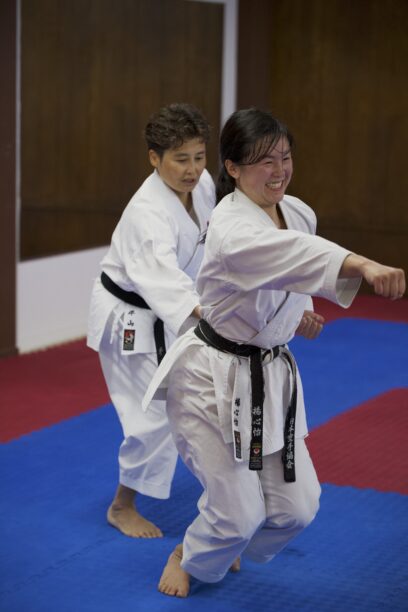
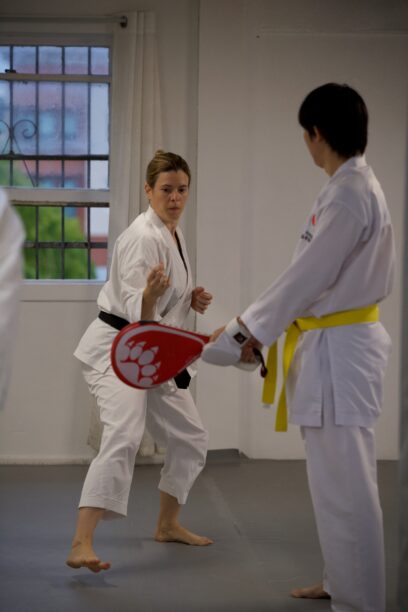
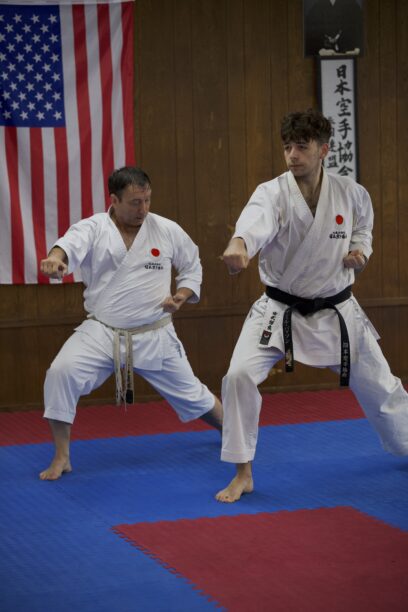
Hirayama Sessions 1-3
After reviewing the concepts from Friday’s closed session, Sensei emphasized using tame (the loading of potential energy into your lower body in transition between techniques) to maximize both power and distance in kihon and kumite. This can be easily demonstrated when comparing two types of gyakuzuki (reverse punch). The first, where one completes their punch at the same time the foot lands, is quick but limits one’s mobility. The second, where one “snakes” their front foot out before the hand technique, allows the attacker the ability to yuriashi (shift in) towards their target and load more power into the hand. The ability to practice and utilize both methods maximizes one’s skillset and gives one another “tool” to apply in kumite.
Another theme was using relaxation to increase the quickness of the hip. This was built upon in kihon sequences that cut quick angles and in a partner kumite drill that required quickly stepping backward to avoid an oizuki.
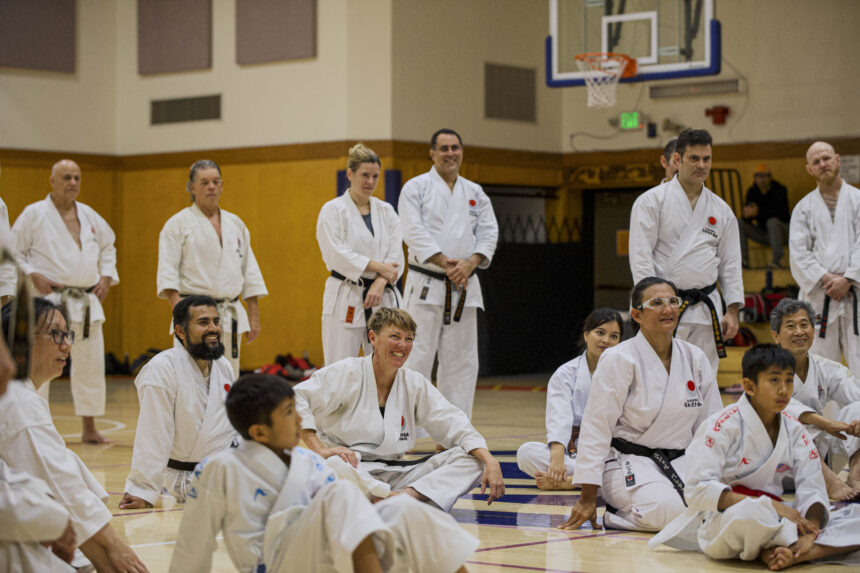
Hirayama Sensei finished the day with a deep dive into Empi. She spoke about using internal tension in one’s legs for proper stance transitions, particularly in the shuto-uke sequences. A general focus of kata instruction was on correct execution, which encompasses correctness of posture, stances, hip positions, eye direction, and course (trajectory) of techniques.
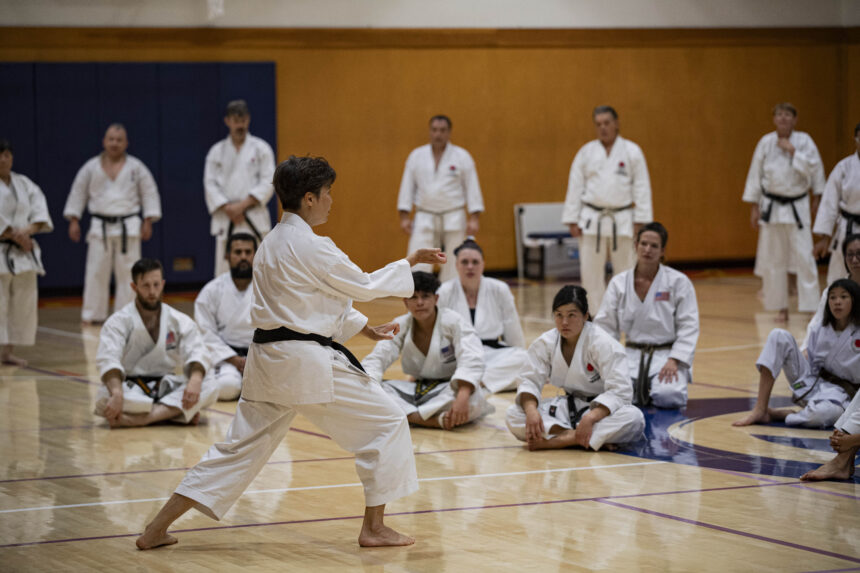
Sunday
Hirayama Sessions 4-5
Sunday’s classes began with exercises that emphasized the importance of a stable base to generate power. For example, punching with the feet fully together or with one foot off the floor is significantly more difficult than punching from the standard shizentai. Keeping that extra focus on the support leg in mind, Sensei walked the class through kihon sequences that challenged everyone’s control of weight distribution. This eventually evolved into a fast-paced three-partner drill that challenged participants to push for speed while still relying on that supporting foot to drive the hand.
The afternoon session was an advanced session that covered Unsu. After a quick review of proper foot courses for sanchin-dachi and nekoashi-dachi, Sensei gave technical details throughout a full kata walkthrough. Special focus was given to the kibadachi sequence after the first kiai. She stressed that one should train to be able to generate power both with and without the yuriashi to aid them. Thus, we must rely on other parts of the technique to maintain a similar feel to our techniques. Examples are whipping the ageshuto hand while firmly pulling the hikite hand or using the connection into the feet to initiate the drive of the torso. Sensei also gave a short progression to help camp-goers with breaking down the jump. Similar to in Kanku-sho, you can first practice rotating 360 degrees around a vertical axis and stepping backwards into the landing position without ever leaving the ground. From there, you can slowly speed up and make the axis increasingly horizontal. Finally, you should work on dropping from standing into your final position, landing your hands and feet at the same time to make a single sound.
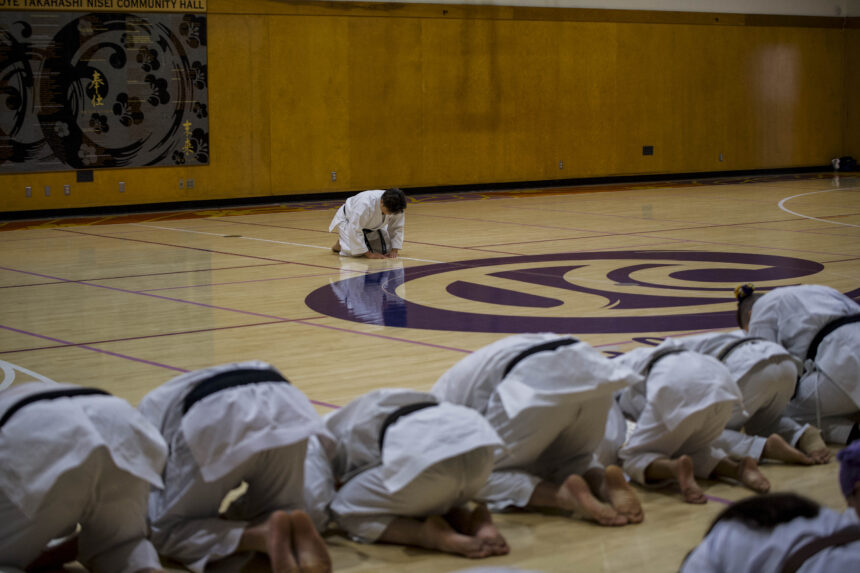

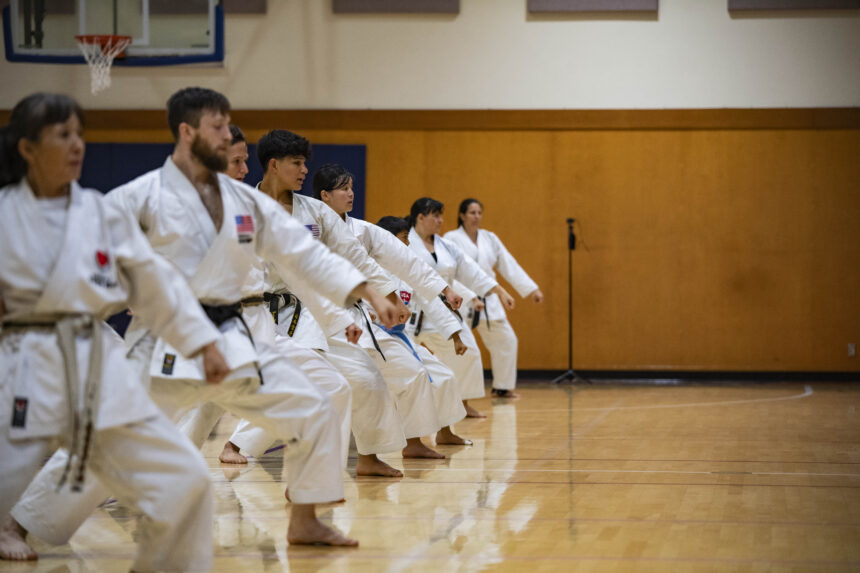
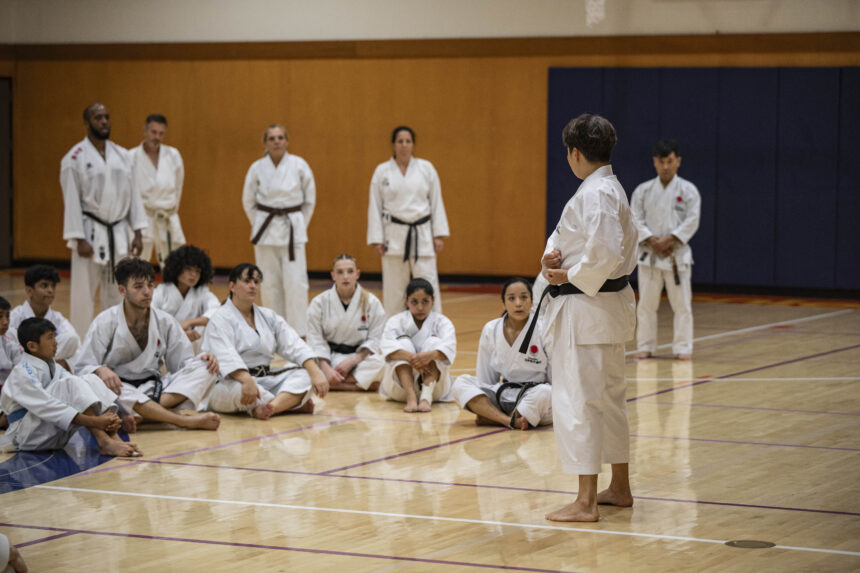
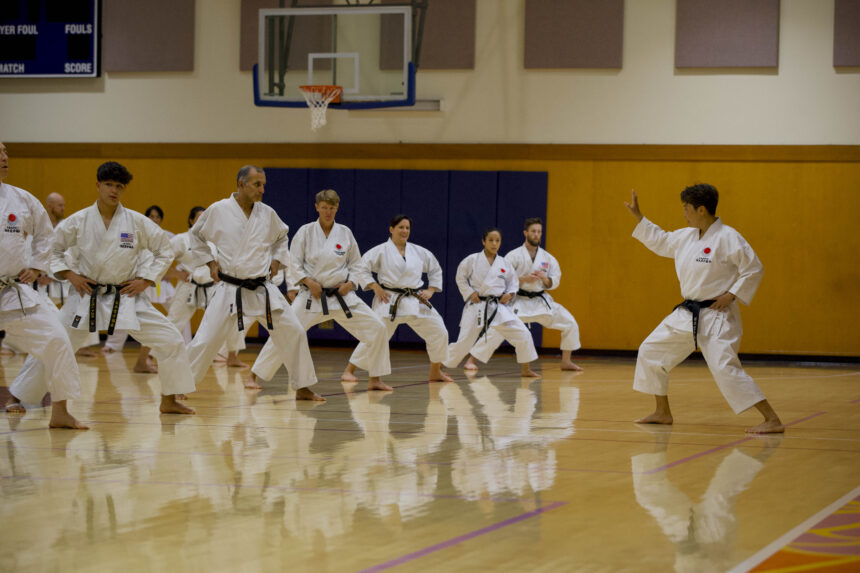
We are deeply grateful to the Japanese Cultural and Community Center of Northern California for allowing us to use their beautiful space and connect our event to the rich cultural history in San Francisco. We would also like to express our sincere gratitude to Hirayama Sensei for her exceptional instruction and dedication, as well as to the organizers, volunteers, and supporting dojos who allowed us to make this camp such a success. We hope to see everyone back for next year’s iteration!